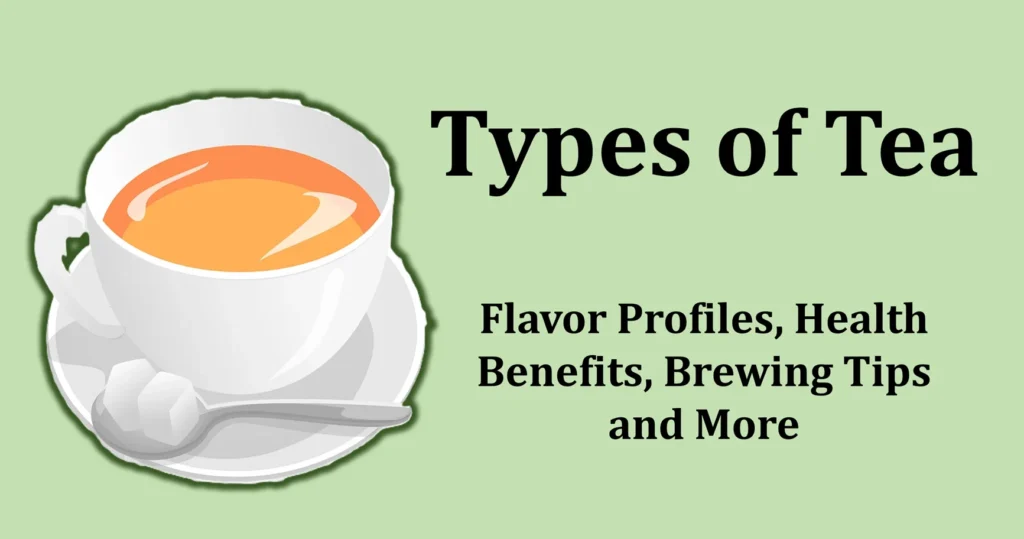
Introduction
Popularity and Cultural Significance of Tea Globally
Tea is one of the most beloved beverages worldwide, second only to water in its popularity. Its roots trace back thousands of years to ancient China, where legend has it that Emperor Shen Nong discovered tea when leaves from a wild tree blew into his pot of boiling water. From these humble beginnings, tea has grown to become a global phenomenon, steeped in rich cultural traditions and ceremonies.
In Asia, tea is more than just a drink; it is an integral part of cultural rituals and social gatherings. In Japan, the art of tea preparation has evolved into the elaborate and meditative Japanese tea ceremony, known as Chanoyu. In China, Gongfu tea ceremonies emphasize the skillful brewing and appreciation of tea. Similarly, in the Middle East, tea plays a crucial role in hospitality, symbolizing warmth and welcome.
The influence of tea extends to the West as well. In the United Kingdom, afternoon tea is a cherished tradition, complete with an assortment of sandwiches, scones, and pastries. In Russia, the samovar—a large metal container used to boil water for tea—holds a place of pride in households. Each of these cultural practices underscores tea’s universal appeal and its capacity to bring people together.
Diversity of Tea Types
The world of tea is remarkably diverse, encompassing a wide range of flavors, aromas, and health benefits. This diversity stems from variations in processing methods, the geographical regions where the tea is grown, and the specific parts of the tea plant used. Broadly, tea can be categorized into six main types: black, green, oolong, white, pu-erh, and herbal teas (tisanes). Each type offers a distinct experience, from the robust and bold flavors of black tea to the delicate and subtle notes of white tea. Additionally, specialty teas like yellow and purple tea add even more variety to the tea landscape. This rich assortment ensures that there is a type of tea to suit every palate and occasion.
Aim of the Post
The aim of this post is to explore and demystify the various types of tea, providing readers with a comprehensive guide to understanding and enjoying this beloved beverage. By delving into the characteristics, health benefits, and brewing tips for each type of tea, we hope to enhance your tea-drinking experience and inspire you to discover new favorites. Whether you’re a seasoned tea enthusiast or a curious newcomer, this guide will offer valuable insights into the world of tea, helping you appreciate the intricacies and delights that each type of tea has to offer.
Main Types of Tea
Black Tea
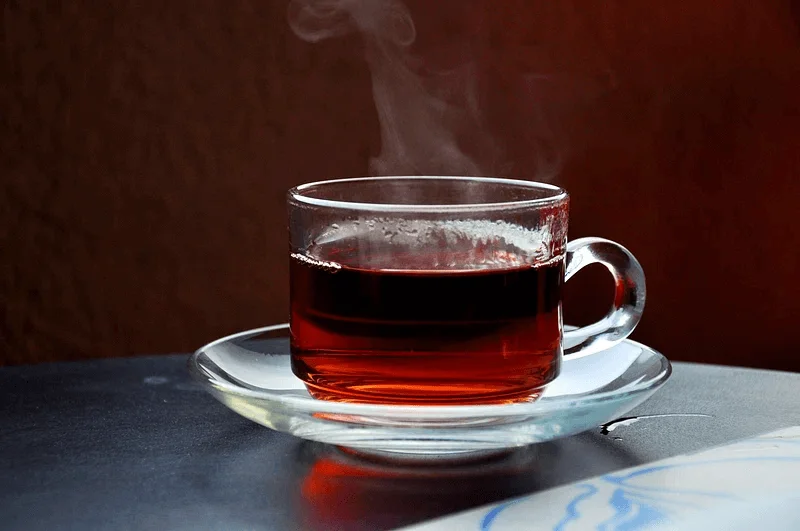
Description: Fully Oxidized Tea with a Strong, Bold Flavor
Black tea is known for its robust and full-bodied flavor, making it one of the most popular types of tea worldwide. The distinct characteristics of black tea come from the full oxidation process the leaves undergo, which turns them a dark brown or black color. This oxidation not only enhances the flavor but also increases the caffeine content, giving black tea its invigorating properties. The flavor profile of black tea can range from malty and sweet to smoky and brisk, depending on the specific variety and region of cultivation.
Popular Varieties
- Assam: Assam tea originates from the Assam region in India and is renowned for its rich, malty flavor and strong, bright color. It is often used in breakfast teas like English Breakfast due to its bold and robust characteristics. Assam tea provides a hearty cup that pairs well with milk and sugar, making it a perfect choice for a morning boost.
- Darjeeling: Darjeeling tea, often referred to as the “Champagne of Teas,” comes from the Darjeeling district in West Bengal, India. This tea is highly prized for its unique muscatel flavor, which has a distinct grape-like taste with floral and fruity undertones. Darjeeling is typically lighter and more delicate than other black teas and is best enjoyed without milk to fully appreciate its nuanced flavors.
- Earl Grey: Earl Grey is a well-loved black tea blend flavored with oil from the rind of bergamot orange. This gives Earl Grey its distinctive citrusy aroma and flavor, which complements the boldness of the black tea base. Earl Grey can be enjoyed plain or with a splash of milk, and it’s often served with lemon to enhance its citrus notes.
Brewing Tips: Optimal Brewing Time and Temperature, Best Pairings
To achieve the best flavor from black tea, it’s essential to brew it correctly:
- Water Temperature: Black tea should be brewed with boiling water, around 200-212°F (93-100°C).
- Brewing Time: Steep black tea for 3-5 minutes. Shorter steeping times result in a lighter flavor, while longer times produce a stronger, more robust cup.
- Amount of Tea: Use about one teaspoon of loose-leaf tea per 8-ounce cup of water. Adapt the quantity to suit your own tastes.
- Best Pairings
- Food: Black tea goes nicely with many different kinds of meals. Assam’s strong flavor complements hearty breakfast items like bacon and eggs, while Darjeeling’s delicate notes pair beautifully with light pastries and desserts. Earl Grey’s citrusy flavor makes it an excellent match for tea cakes and scones.
- Additives: Many people enjoy black tea with milk and sugar, which can mellow its strong flavors. Lemon is a classic addition to Earl Grey, enhancing its bergamot essence.
Green Tea

Description: Unoxidized Tea Known for Its Fresh and Delicate Flavor
Green tea is cherished for its fresh, delicate flavor and numerous health benefits. The leaves of green tea do not oxidize like those of black tea. After harvesting, the leaves are quickly steamed or pan-fired to halt oxidation, preserving their green color and fresh taste. The result is a tea with a lighter, more vegetal flavor profile that can range from sweet and grassy to nutty and toasty, depending on the variety and processing method. Green tea is often associated with a sense of calm and well-being, making it a popular choice for those seeking both flavor and health benefits.
Popular Varieties
- Sencha: Sencha is the most common type of green tea in Japan, making up about 80% of the country’s tea production. It is known for its bright green leaves and a flavor that is both sweet and grassy, with a hint of umami. The quality of Sencha can vary greatly, with higher grades offering a more complex and rich taste. Sencha is typically enjoyed throughout the day in Japan and is a staple of Japanese tea culture.
- Matcha: Matcha is a powdered green tea made from shade-grown leaves known as tencha. After harvesting, the leaves are deveined, destemmed, and stone-ground into a fine powder. This process results in a vibrant green tea that is whisked into hot water, creating a frothy, rich beverage. Matcha has a bold, vegetal flavor with a creamy texture and a hint of sweetness. It is packed with antioxidants and is often used in traditional Japanese tea ceremonies, as well as in various culinary applications like lattes, smoothies, and desserts.
- Longjing (Dragon Well): Longjing, also known as Dragon Well, is a famous Chinese green tea from the Zhejiang province. It is hand-pressed during processing, giving it its characteristic flat, sword-shaped leaves. Longjing tea is known for its smooth, nutty flavor with a hint of chestnut and a sweet, lingering aftertaste. The tea’s high quality and unique production process have made it one of China’s most prized teas.
Health Benefits: Rich in Antioxidants, Promotes Metabolism
Green tea is renowned for its numerous health benefits, largely attributed to its high antioxidant content. Some of the key health benefits include:
- Rich in Antioxidants: Green tea is loaded with polyphenols and catechins, particularly epigallocatechin gallate (EGCG), which help combat oxidative stress and reduce inflammation.
- Promotes Metabolism: The catechins in green tea are known to boost metabolic rate and increase fat burning, making it a popular choice for those looking to manage their weight.
- Heart Health: Drinking green tea on a regular basis is linked to a decreased risk of heart disease. It helps improve cholesterol levels and enhances blood flow.
- Brain Health: Green tea contains caffeine and the amino acid L-theanine, which can improve brain function, enhance mood, and increase alertness without the jittery effects often associated with coffee.
Brewing Tips: Lower Temperatures and Shorter Steeping Times
To fully enjoy the delicate flavors of green tea and reap its health benefits, it is essential to brew it correctly:
- Water Temperature: Green tea should be brewed with water that is not boiling, ideally between 160-180°F (70-80°C). The leaves may become bitter due to scorching from boiling water.
- Brewing Time: Steep green tea for 1-3 minutes. Overstepping can also lead to bitterness. Adjust the steeping time based on the specific variety and personal taste preferences.
- Amount of Tea: Use about one teaspoon of loose-leaf green tea per 8-ounce cup of water. For Matcha, use about one to two teaspoons of powder per serving and whisk it in a bowl with hot water until frothy.
- Best Pairings
- Food: Green tea pairs well with a variety of foods. Sencha’s fresh flavor complements sushi and light salads, while Longjing’s nutty taste pairs nicely with seafood and lightly seasoned dishes. Matcha, with its rich and creamy texture, is often enjoyed with traditional Japanese sweets like mochi.
- Additives: Green tea is typically enjoyed plain to appreciate its delicate flavors. However, a touch of honey or a squeeze of lemon can enhance its taste without overpowering it.
Oolong Tea
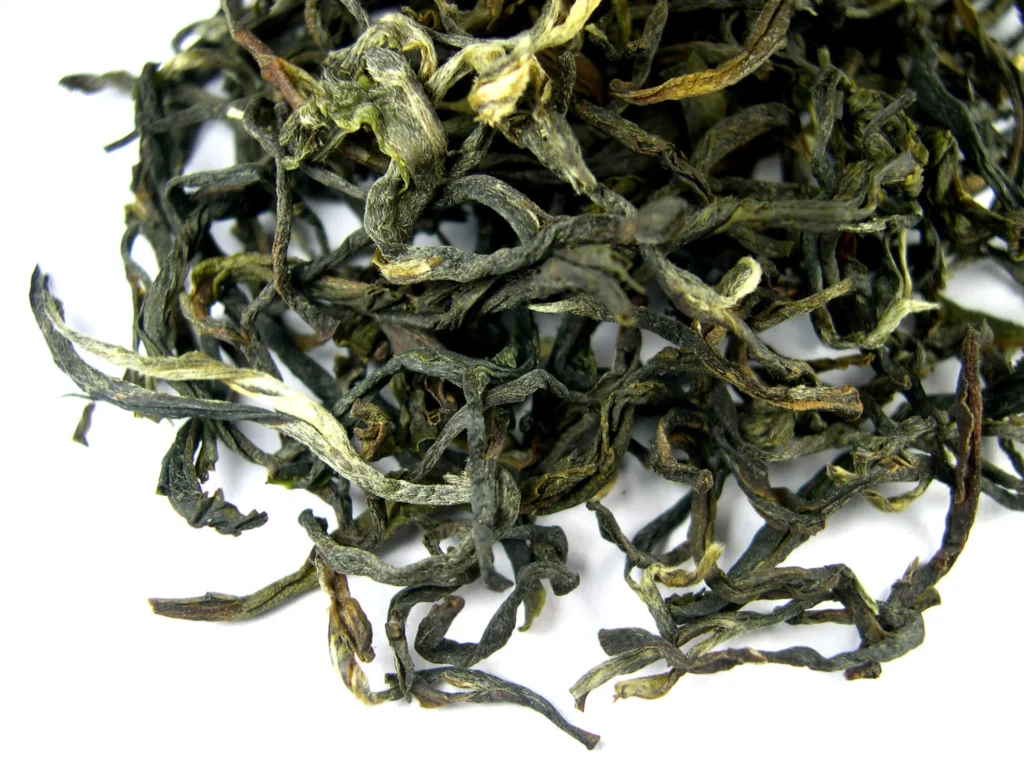
Description: Partially Oxidized Tea
Oolong tea is a unique and diverse category of tea that falls between green and black tea in terms of oxidation. The partial oxidation process gives oolong tea a distinctive flavor profile that combines the fresh, vegetal notes of green tea with the rich, robust characteristics of black tea. The degree of oxidation can vary widely among oolong teas, resulting in a broad spectrum of flavors and aromas. Oolong tea leaves are often rolled, twisted, or curled, which allows them to slowly unfurl during brewing, releasing their complex flavors and aromas over multiple infusions.
Popular Varieties
- Tieguanyin: Tieguanyin, also known as Iron Goddess of Mercy, is a famous Chinese oolong tea from the Anxi region in Fujian Province. It is renowned for its floral aroma, smooth texture, and complex flavor. The tea leaves are tightly rolled into small pellets that slowly unfurl during brewing, releasing a sweet, orchid-like fragrance with a hint of creaminess. Tieguanyin can be lightly oxidized, resulting in a greener tea, or more heavily oxidized for a darker, richer taste.
- Da Hong Pao (Big Red Robe): Da Hong Pao is one of the most prestigious oolong teas, hailing from the Wuyi Mountains in Fujian Province, China. Known for its rich, robust flavor and dark, roasted notes, Da Hong Pao is highly prized and often commands high prices. The tea has a deep, earthy taste with hints of rock minerals, a characteristic of teas grown in the rocky terrain of the Wuyi Mountains. The leaves are large and twisted, producing a tea that is both bold and complex, with a lingering aftertaste.
Flavor Profile: Range from Light and Floral to Dark and Roasted
Oolong tea offers an incredibly diverse flavor profile that can vary significantly depending on the level of oxidation and the specific processing techniques used:
- Light and Floral: Lightly oxidized oolong teas, such as Tieguanyin, have a delicate, floral aroma and a sweet, smooth taste. These teas often have notes of orchid, jasmine, and honey, with a creamy mouthfeel.
- Dark and Roasted: More heavily oxidized oolong teas, like Da Hong Pao, exhibit a rich, roasted flavor with earthy undertones. These teas can have notes of caramel, chocolate, and roasted nuts, providing a robust and satisfying cup.
Brewing Tips: Multiple Infusions, Varying Temperature
To fully appreciate the complexity and depth of oolong tea, it’s important to follow proper brewing techniques:
- Water Temperature: The ideal water temperature for brewing oolong tea can range from 185-205°F (85-96°C), depending on the level of oxidation. Lightly oxidized oolongs benefit from slightly lower temperatures, while more heavily oxidized oolongs can handle higher temperatures.
- Brewing Time: Oolong tea is well-suited for multiple infusions, with each infusion revealing different aspects of the tea’s flavor profile. Start with a short steeping time of 1-2 minutes for the first infusion, and gradually increase the time by 30 seconds to 1 minute for subsequent infusions.
- Amount of Tea: Use about one to two teaspoons of loose-leaf oolong tea per 8-ounce cup of water. Adapt the quantity to your own personal preferences.
- Best Pairings
- Food: The diverse flavors of oolong tea make it a versatile pairing for a wide range of foods. Lightly oxidized oolongs like Tieguanyin pair well with light, delicate dishes such as seafood, chicken, and salads. Darker oolongs like Da Hong Pao complement richer foods such as roasted meats, mushrooms, and dark chocolate.
- Additives: Oolong tea is best enjoyed plain to appreciate its complex flavors. However, a touch of honey can enhance the sweetness of lighter oolongs, and a splash of milk can add creaminess to darker, more robust varieties.
White Tea
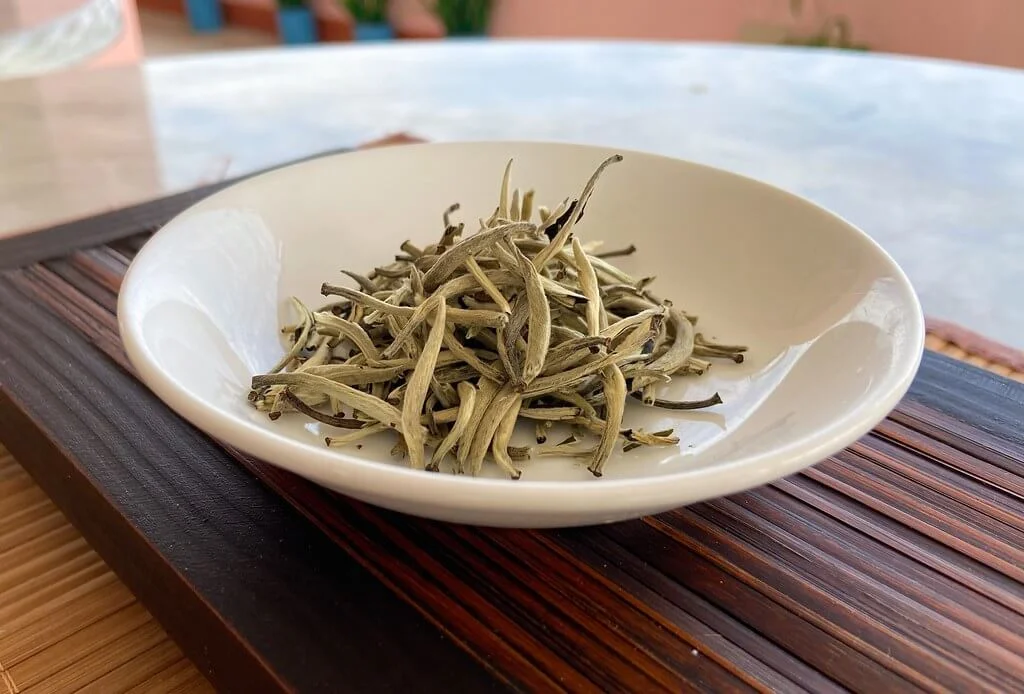
Description: Minimally Processed Tea with a Light, Sweet Flavor
White tea is the least processed of all the tea types, made from the young leaves and buds of the Camellia sinensis plant. The minimal processing involves simply plucking the leaves and buds and allowing them to wither and dry naturally. This gentle handling preserves the tea’s delicate structure and maintains a high concentration of natural antioxidants. The result is a tea with a subtle, light, and sweet flavor profile, often described as floral or fruity with a smooth and refreshing finish. White tea is typically pale yellow or light gold in color and has a soft, soothing aroma.
Popular Varieties
- Bai Mudan (White Peony): Bai Mudan, also known as White Peony, is a popular variety of white tea that includes both the young buds and the first few leaves of the tea plant. This combination gives Bai Mudan a more robust flavor compared to other white teas. It has a slightly fuller body with sweet, floral notes and a hint of earthiness. The leaves are often plucked in the early spring, providing a fresh and vibrant character that makes this tea highly appreciated by connoisseurs.
- Silver Needle: Silver Needle, or Baihao Yinzhen, is one of the most prestigious and sought-after white teas. Made exclusively from the tender, young buds of the tea plant, Silver Needle is renowned for its delicate, sweet flavor and silky texture. The buds are covered in fine white hairs, giving the tea its distinctive appearance and name. Silver Needle has a subtle aroma with notes of honey and melon, making it a favorite among tea enthusiasts for its purity and elegance.
Health Benefits: High in Antioxidants, Good for Skin Health
White tea is celebrated for its numerous health benefits, which are largely attributed to its high content of natural antioxidants. Some of the key health benefits include:
- High in Antioxidants: White tea is rich in catechins, particularly epigallocatechin gallate (EGCG), which help protect the body from oxidative stress and reduce inflammation.
- Good for Skin Health: The antioxidants in white tea can help promote healthy skin by protecting against damage from UV rays and environmental pollutants. Regular consumption of white tea can improve skin elasticity and reduce the signs of aging.
- Boosts Immune System: White tea contains compounds that can enhance the immune system, helping to protect against common infections and illnesses.
- Supports Heart Health: The polyphenols in white tea can help lower cholesterol levels and improve cardiovascular health by reducing the risk of heart disease.
Brewing Tips: Gentle Handling, Lower Temperatures
To fully appreciate the delicate flavors and health benefits of white tea, it’s important to brew it correctly:
- Water Temperature: White tea should be brewed with water that is well below boiling, ideally between 160-185°F (70-85°C). Using water that is too hot can scorch the delicate leaves and result in a bitter taste.
- Brewing Time: Steep white tea for 2-5 minutes, depending on the variety and personal taste preference. A longer steeping time can enhance the flavor without becoming overly strong or bitter.
- Amount of Tea: Use about one to two teaspoons of loose-leaf white tea per 8-ounce cup of water. The light and fluffy nature of white tea means you may need a bit more tea compared to other types.
- Best Pairings
- Food: The subtle flavors of white tea pair well with light, delicate foods such as fresh fruit, salads, and lightly seasoned seafood. Bai Mudan’s fuller body can complement slightly richer foods like mild cheeses and chicken.
- Additives: White tea is best enjoyed plain to appreciate its natural sweetness and delicate flavors. However, a small amount of honey can enhance its sweetness without overpowering the tea.
Pu-erh Tea
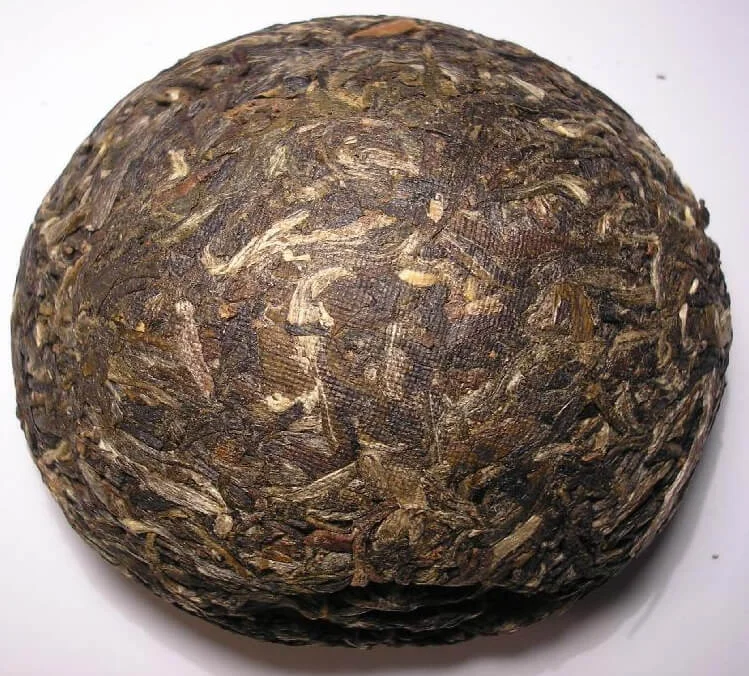
Description: Fermented Tea with a Rich, Earthy Flavor
Pu-erh tea is a unique category of tea known for its distinct fermentation process and rich, earthy flavor. Originating from Yunnan Province in China, Pu-erh tea is made from the large leaves of the Camellia sinensis var. assamica plant. After the leaves are picked, they undergo a microbial fermentation and oxidation process, which can continue for months or even years. This fermentation gives Pu-erh tea its characteristic dark color and complex flavor profile, which can include notes of earth, wood, leather, and even mushrooms. The tea is often compressed into cakes or bricks, which can be stored and aged to enhance their flavor over time.
Popular Varieties
- Raw (Sheng): Raw Pu-erh, also known as Sheng Pu-erh, is the traditional form of Pu-erh tea. The leaves are harvested, withered, pan-fired, and then sun-dried before being compressed into cakes or bricks. Over time, Sheng Pu-erh undergoes natural fermentation and oxidation, which can continue for decades. The flavor of Sheng Pu-erh evolves as it ages, starting with a fresh, grassy taste and developing richer, more complex flavors with earthy and woody notes. The aging process can significantly enhance the depth and smoothness of the tea.
- Ripe (Shou): Ripe Pu-erh, also known as Shou Pu-erh, is a more modern development that uses an accelerated fermentation process to mimic the aging of Sheng Pu-erh. After the initial processing steps, the tea leaves are piled, dampened, and covered to promote microbial fermentation, a process known as “wet piling” (wo dui). This process takes about 45 to 60 days, after which the tea is dried and compressed. Shou Pu-erh has a rich, dark color and a smooth, mellow flavor with pronounced earthy and woody notes, making it ready to drink immediately without the need for extended aging.
Aging Process: Unique Aging Process Similar to Wine
Pu-erh tea’s aging process is similar to that of fine wine. Both raw and ripe Pu-erh teas can be aged for many years, during which their flavors continue to develop and mature. Proper storage is crucial for aging Pu-erh tea; it should be kept in a cool, dry, and well-ventilated environment, away from strong odors. Over time, the microbial activity and oxidation within the tea lead to a transformation in flavor, creating a smoother, more rounded, and complex taste. Collectors often prize aged Pu-erh for its depth and unique characteristics that cannot be found in younger teas.
Health Benefits: Aids Digestion, Lowers Cholesterol
Pu-erh tea is renowned for its health benefits, which are enhanced by its fermentation process. Some of the key health benefits include:
- Aids Digestion: Pu-erh tea is often consumed after meals to help with digestion. The microbial fermentation produces beneficial probiotics that can improve gut health and aid in the digestion of fatty foods.
- Lowers Cholesterol: Studies have shown that Pu-erh tea can help reduce levels of LDL cholesterol (the “bad” cholesterol) and increase levels of HDL cholesterol (the “good” cholesterol), thereby promoting cardiovascular health.
- Weight Management: It is said that pu-erh tea increases metabolism and promotes weight loss. Its capacity to enhance digestion and break down fats can help with weight management.
- Detoxification: The antioxidants in Pu-erh tea can help detoxify the body by neutralizing free radicals and promoting liver health.
Brewing Tips: Rinsing the Leaves, Longer Steeping
To fully enjoy the unique flavors and benefits of Pu-erh tea, it is essential to brew it properly:
- Rinsing the Leaves: Before the first infusion, it is customary to rinse the Pu-erh tea leaves. Pour boiling water over the leaves and let them sit for 10-20 seconds, then discard the water. This step helps to awaken the leaves and remove any impurities.
- Water Temperature: Pu-erh tea is best brewed with boiling water, around 212°F (100°C).
- Brewing Time: The first infusion should be steeped for about 20-30 seconds. Subsequent infusions can be gradually increased in steeping time. Pu-erh tea can withstand multiple infusions, with each infusion revealing new layers of flavor.
- Amount of Tea: Use about one teaspoon of Pu-erh tea per 8-ounce cup of water. Depending on your preference and the tea’s strength, adjust the amount.
- Best Pairings
- Food: Pu-erh tea pairs well with rich, savory foods, such as roasted meats, mushrooms, and oily dishes. Its digestive properties make it an excellent accompaniment to heavy meals.
- Additives: Pu-erh tea is typically enjoyed plain to appreciate its complex flavors. However, a touch of honey or a slice of citrus can complement its earthy notes without overpowering the tea.
Herbal Tea (Tisanes)

Description: Caffeine-Free Beverages Made from Herbs, Flowers, and Fruits
Herbal teas, also known as tisanes, are a diverse category of beverages made from the infusion of herbs, flowers, fruits, spices, and other plant materials. Unlike traditional teas, which are derived from the Camellia sinensis plant, herbal teas are caffeine-free and offer a wide range of flavors and health benefits. Each herbal tea has its unique characteristics, determined by the specific ingredients used. These teas can be enjoyed hot or cold and are often used for their therapeutic properties as well as their pleasing tastes.
Popular Varieties
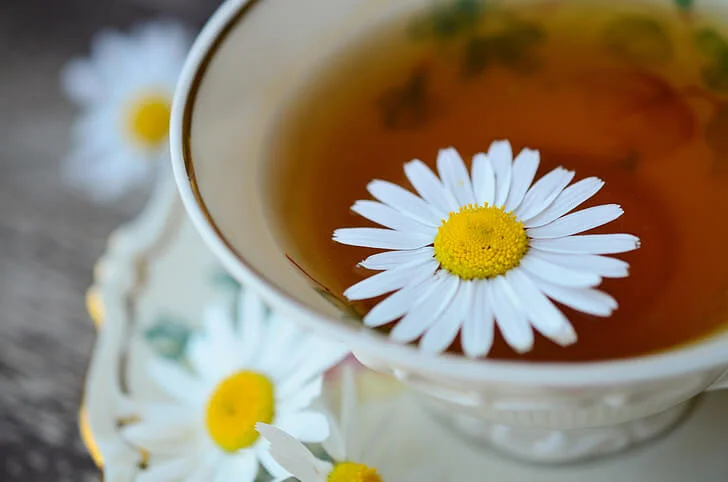
Chamomile
The dried flowers of the chamomile plant are used to make chamomile tea. It is one of the most popular herbal teas due to its calming effects and pleasant, apple-like flavor. Chamomile tea is commonly consumed before bedtime to promote relaxation and improve sleep quality. It also has anti-inflammatory properties and can help soothe digestive issues and relieve mild stomach discomfort.
Peppermint
Depending on your preference and the tea’s strength, adjust the amount. It is well-known for its refreshing, minty flavor and invigorating aroma. Peppermint tea is often used to alleviate digestive problems, such as bloating, gas, and indigestion. It can also help relieve headaches and sinus congestion due to its natural menthol content. Peppermint tea is enjoyed both hot and cold and is a popular choice for a soothing, refreshing beverage.
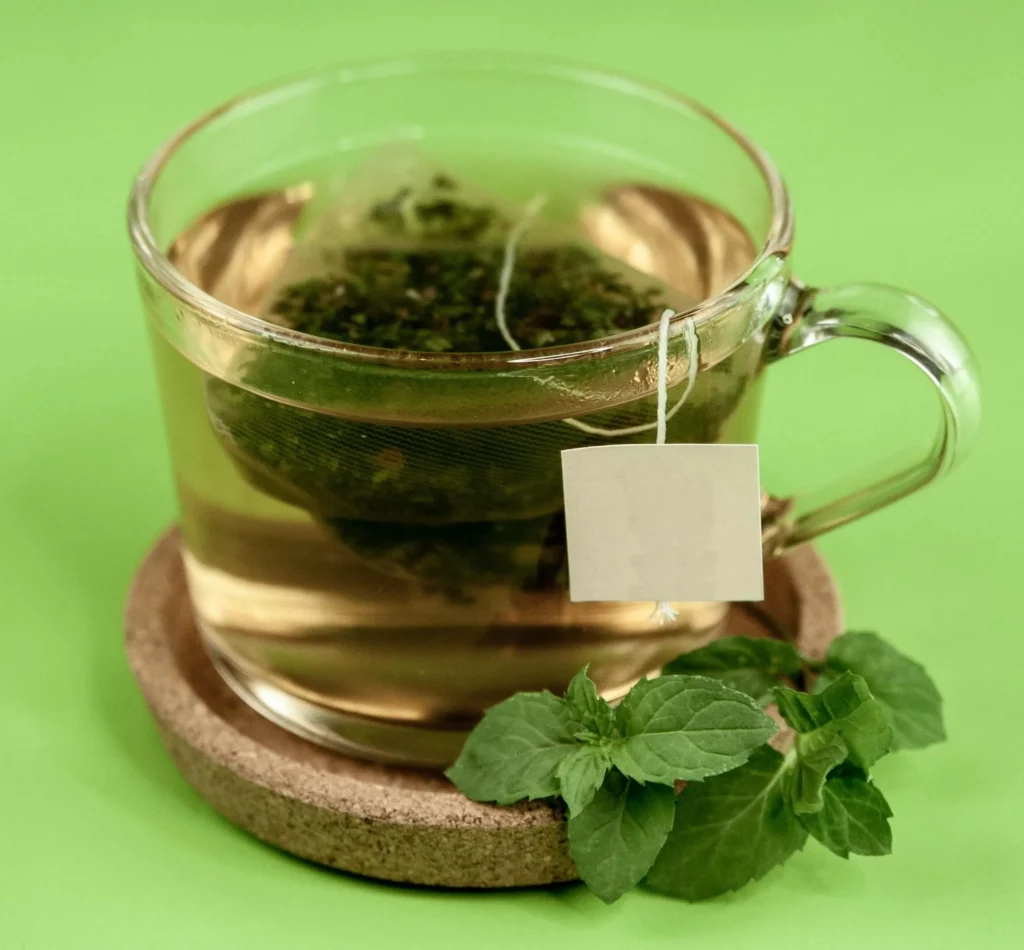

Rooibos
Rooibos, also known as red bush tea, originates from South Africa and is made from the leaves of the Aspalathus linearis plant. Rooibos tea has a rich, reddish-brown color and a naturally sweet, slightly nutty flavor. It is packed with antioxidants and is often used to support heart health and improve skin conditions. Unlike other herbal teas, rooibos contains no tannins, making it less likely to cause bitterness and more suitable for those with sensitive stomachs.
Health Benefits: Varies by Ingredient, Often Used for Medicinal Purposes
Herbal teas offer a wide range of health benefits, which vary depending on the specific ingredients used. Some common health benefits include:
- Chamomile: Known for its calming effects, chamomile tea can help reduce anxiety, improve sleep quality, and alleviate menstrual pain. Its anti-inflammatory properties also make it useful for soothing skin irritations and reducing muscle spasms.
- Peppermint: Peppermint tea is excellent for digestive health, helping to relieve symptoms of irritable bowel syndrome (IBS), indigestion, and nausea. Its natural menthol content can also act as a muscle relaxant and pain reliever.
- Rooibos: Rich in antioxidants such as aspalathin and quercetin, rooibos tea can help protect against oxidative stress and inflammation. It supports heart health by improving blood pressure and cholesterol levels. Rooibos is also beneficial for bone health due to its high content of calcium, manganese, and fluoride.
Brewing Tips: Varies Widely Depending on the Herb or Blend
Brewing herbal teas requires attention to the specific needs of each herb or blend to maximize their flavors and benefits:
- Water Temperature: Most herbal teas should be brewed with boiling water, around 212°F (100°C). However, some delicate herbs may require slightly cooler water to preserve their volatile oils and flavors.
- Brewing Time: Herbal teas generally need a longer steeping time compared to traditional teas. Steep for 5-10 minutes to fully extract the flavors and beneficial compounds. Some robust herbs like rooibos can steep even longer without becoming bitter.
- Amount of Tea: Use about one tablespoon of dried herbs per 8-ounce cup of water. For fresh herbs, use a bit more to account for the water content in the leaves and flowers.
- Best Pairings
- Food: Herbal teas pair well with light snacks and desserts. Chamomile complements honey-infused treats and mild pastries, while peppermint pairs nicely with chocolate desserts and fruit salads. Rooibos, with its rich flavor, can be enjoyed with a variety of foods, from savory dishes to sweet confections.
- Additives: Herbal teas can be enjoyed plain or with various additives. A touch of honey or a squeeze of lemon can enhance the natural flavors of many herbal teas. Fresh mint leaves, ginger slices, and cinnamon sticks are also popular additions that can add complexity and additional health benefits to the tea.
Specialty Teas
Yellow Tea

Description
Yellow tea is a rare and highly prized variety of tea that shares similarities with green tea but undergoes a unique processing method that includes a prolonged, slow drying phase known as “yellowing.” This process gives the tea leaves a distinctive yellow color and a mellow, nuanced flavor profile. Yellow tea is less grassy and astringent than green tea, with smoother, sweeter notes and a subtle floral aroma. Due to its delicate processing and limited production, yellow tea is often considered a luxury tea prized by connoisseurs.
Flavor Profile
Yellow tea offers a delicate and refined taste characterized by mellow, fruity, and floral notes. The flavor is smoother and less grassy than green tea, with a subtle sweetness that lingers on the palate. Yellow tea is known for its complexity and depth, with layers of flavor that unfold with each sip. The aroma is equally enchanting, with hints of orchid, honeysuckle, and fresh grass, creating a sensory experience that is both soothing and invigorating.
Purple Tea
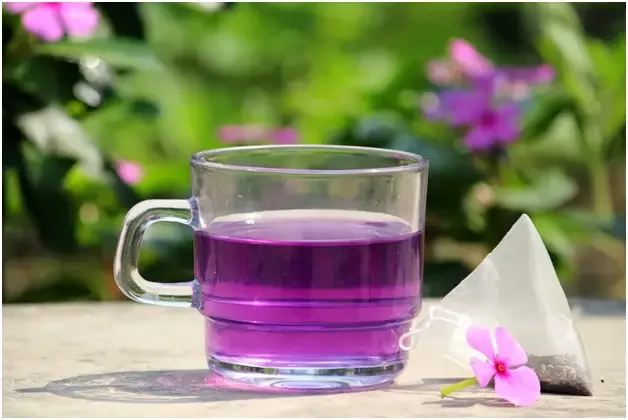
Description
Purple tea is a unique variety of tea made from the leaves of the Camellia sinensis plant, which naturally have purple-colored leaves. This distinctive color comes from the presence of anthocyanins, a type of antioxidant found in certain fruits and vegetables. Purple tea is relatively rare and is primarily cultivated in regions of Kenya and China. The tea leaves undergo a similar processing method to black or green tea, resulting in a beverage with a rich, earthy flavor and a slightly sweet finish. Purple tea is celebrated not only for its unique color but also for its potential health benefits due to its high anthocyanin content.
Health Benefits
Purple tea is rich in anthocyanins, which are potent antioxidants known for their numerous health benefits. Anthocyanins have been linked to improved heart health, reduced inflammation, and enhanced immune function. These antioxidants may also help protect against certain types of cancer and promote overall well-being. Additionally, purple tea contains other beneficial compounds such as catechins and polyphenols, which further contribute to its health-promoting properties.
By exploring these specialty teas, you can delve into the fascinating world of rare and unique flavors, while also enjoying potential health benefits offered by their distinctive characteristics. Whether you’re savoring the delicate nuances of yellow tea or sipping on the rich, antioxidant-rich brew of purple tea, each cup offers a journey of discovery and delight.
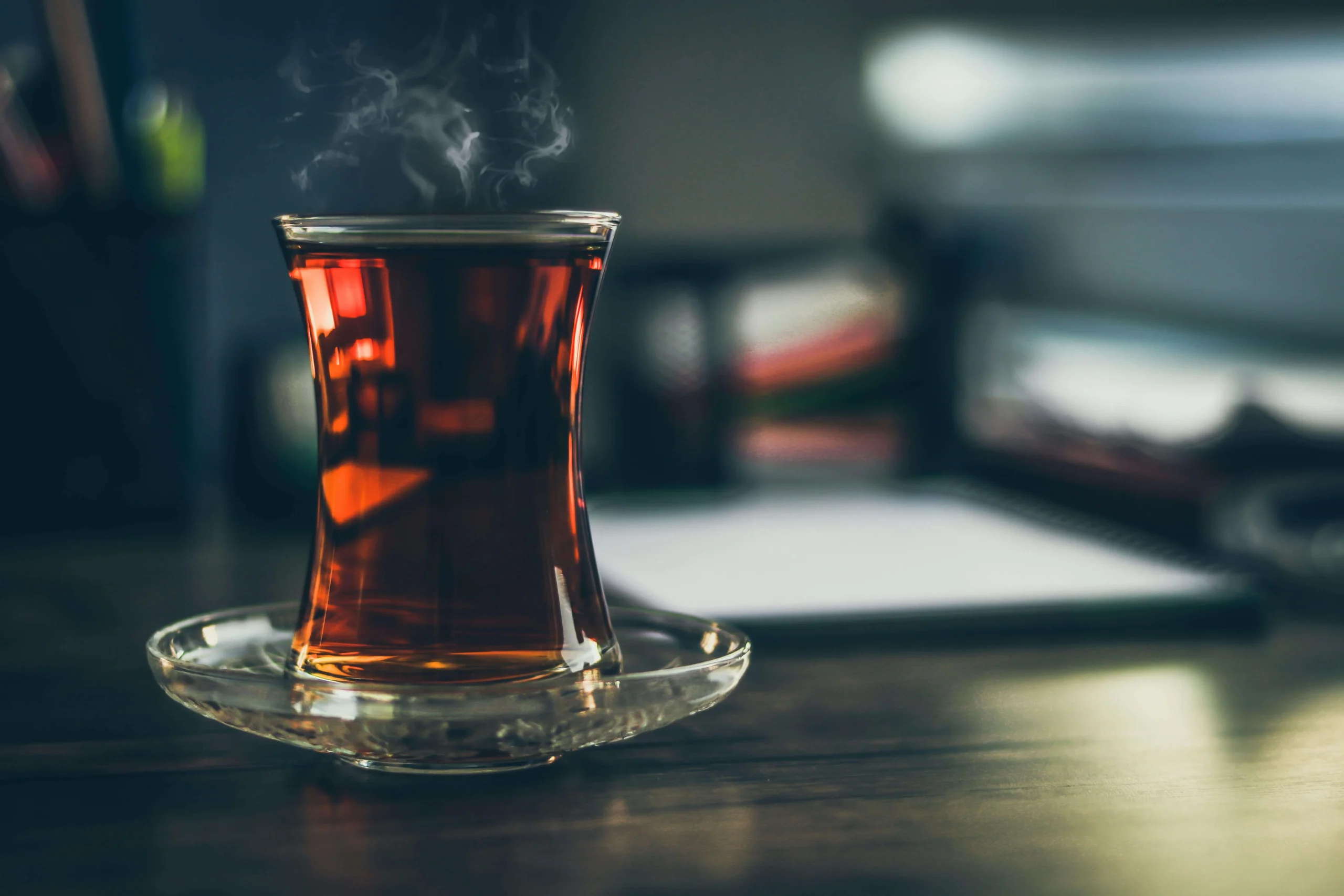
How to Choose the Right Tea for You
Choosing the right tea can be a delightful journey that involves exploring different flavors, considering health benefits, and immersing yourself in cultural experiences. Here are some factors to consider when selecting the perfect tea for you:
Flavor Preferences
- Understanding Tea Types: Familiarize yourself with the main types of tea and their flavor profiles. For example, if you enjoy bold and robust flavors, black tea might be your preference. If you prefer lighter, floral notes, you might lean towards green or white tea.
- Experimentation: Don’t be afraid to try new teas and explore different varieties. Visit tea shops or attend tastings to sample a wide range of flavors and find what resonates with your palate.
Health Considerations
- Research Health Benefits: Take into account the potential health benefits of different teas. For example, if you’re looking to improve digestion, you might opt for herbal teas like peppermint or chamomile. If you’re interested in antioxidants, green tea or purple tea could be a great choice.
- Consult with a Health Professional: If you have specific health concerns or dietary restrictions, consult with a healthcare professional to determine which teas are best suited for your needs.
Cultural Experiences
- Exploring Tea Origins: Delve into the cultural significance of tea by exploring varieties from different regions. Experience the traditional tea ceremonies of Japan with matcha or savor the rich history of Pu-erh tea from China.
- Learning Tea Rituals: Embrace the rituals and customs associated with tea drinking in various cultures. Whether it’s the formalities of a Chinese tea ceremony or the simplicity of British afternoon tea, each tradition offers a unique perspective on the art of tea.
Conclusion & FAQs
Tea is a beverage with a rich tapestry of flavors, aromas, and traditions, making it a fascinating journey of exploration for enthusiasts worldwide. From the boldness of black tea to the delicate nuances of white tea, each variety offers a unique experience that can delight the senses and nourish the body. As you embark on your tea journey, remember to:
- Embrace Diversity: Celebrate the diversity of tea and its myriads of flavors, from the earthy richness of Pu-erh to the floral elegance of yellow tea.
- Discover Your Favorites: Take the time to explore different teas and find the ones that resonate with your taste buds and lifestyle.
- Share Your Experience: Engage with fellow tea lovers and share your favorite tea experiences. Whether it’s a cherished memory of a tea ceremony or a new discovery from a local tea shop, your stories can inspire others to embark on their own tea adventures.
Frequently Asked Questions (FAQs)
What are the main types of tea?
The main types of tea are green, black, white, oolong, Pu-erh, and herbal teas.
How does the processing method differ between green, black, and white tea?
Green tea is minimally processed, with leaves typically being steamed or pan-fired to halt oxidation. Black tea undergoes full oxidation, while white tea is withered and dried with minimal oxidation.
What are the flavor differences between green, black, and oolong tea?
Green tea tends to have a grassy, vegetal flavor, while black tea is bold and robust with malty or fruity notes. Oolong tea falls between the two, offering a range of flavors from floral and creamy to roasted and earthy.
Are there any health benefits associated with drinking different types of tea?
Yes, various types of tea offer different health benefits. For example, green tea is rich in antioxidants, black tea may support heart health, and herbal teas like chamomile can promote relaxation and aid digestion.
What is the difference between herbal tea and traditional tea?
Herbal teas, also known as tisanes, are caffeine-free beverages made from herbs, fruits, and flowers, while traditional teas come from the Camellia sinensis plant and contain caffeine.
How do I choose the best tea for me based on my taste preferences?
Experiment with different types of tea to find the flavors you enjoy most. Consider your preferences for boldness, sweetness, and aroma, and explore teas that align with those tastes.
Can you explain the differences between loose leaf tea and tea bags?
Loose leaf tea consists of whole or partially broken tea leaves, allowing for more flavor and aroma to be extracted during brewing. Tea bags typically contain finely ground tea leaves, offering convenience but potentially sacrificing flavor.
Are there any cultural or regional differences in tea drinking customs?
Yes, tea drinking customs vary widely across cultures and regions. For example, in Japan, matcha is enjoyed as part of traditional tea ceremonies, while in England, afternoon tea is a social occasion featuring black tea served with milk and pastries.
How should I store different types of tea to maintain their freshness?
Tea should be kept out of the sun, heat, and moisture in airtight containers. To prevent flavor transfer, keep various types of tea apart and keep tea away from items with strong aromas.
Can you recommend some unique or rare varieties of tea to try?
Consider exploring rare varieties such as yellow tea, which offers a mellow, fruity flavor, or purple tea, known for its high antioxidant content due to its purple leaves. Additionally, aged Pu-erh tea and artisanal oolongs can provide unique tasting experiences.
